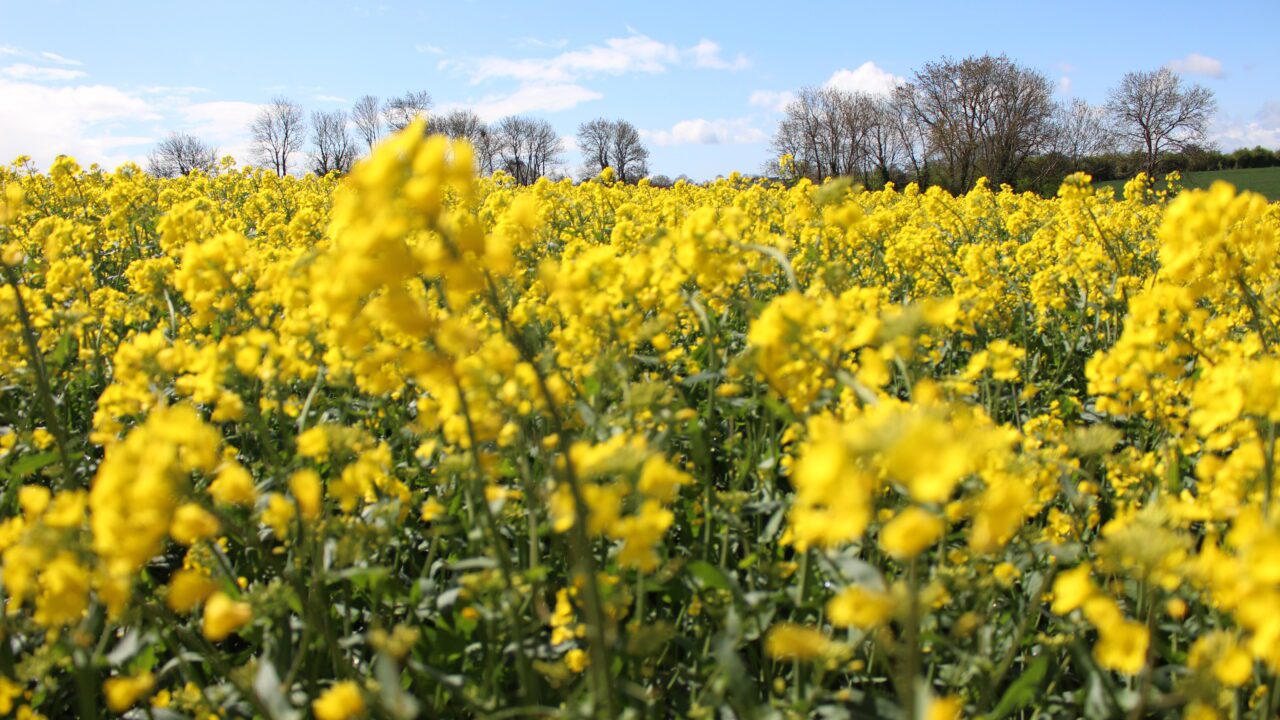Teagasc has confirmed a significant increase in the area of oilseed rape planted this year – a 20% increase in cropping area is on the cards.
This could bring the area of winter oilseed rape grown in Ireland during 2022/2023 close to 20,000ha.
Apart from its many other advantages, rape is often chosen as a crop option to control difficult weeds in fields.
A recent episode of the Tillage Edge podcast saw Teagasc tillage experts, Michael Hennessy and Ciaran Collins, discuss the weed control option in winter oilseed rape.
According to Collins, the area of rape grown in Ireland has almost doubled over recent years. Factors driving this growth include the margin that can be achieved from the crop.
“We have seen oilseed rape prices increases substantially over the past two seasons,” he said.
“Merchants are offering forward prices for rape that are just short of €600/t. At that kind of price, there is a quite a good margin to be made.
“But, increasingly, farmers are recognising the benefits of break crops within a rotation.”
Weather for oilseed rape
Collins went on to point out that the weather has been a big factor in encouraging farmers to look at oilseed rape for the season. The 2022 harvest was completed very early.
“In turn, this meant that straw was cleared and now we have had the weather to allow the timely planting of oilseed rape,” Collins said.
“The promise of rain in the forecast will also encourage growers to get on with planting over the coming days.”
Herbicide
Herbicide choice will depend on the type of weed expected within a particular field.
Pre-emergent herbicides cover the broadest range of broadleaf weeds.
“If the type of weed challenge is not known, the use of pre-emergent herbicides represents the safer management option,” Collins said.
“Another option is to wait and pick up both grass and broadleaf weeds together with a post-emergent herbicide.
“But whatever herbicide control measures are agreed for oilseed rape, I would strongly urge growers to contact their local merchants prior to planting, as the supply of certain products is quite tight at the present time.”
Collins advises the use of a post-emergent herbicide in cases where the soil cover over the actual rape seed is less than 15mm.
“Heavy rain within two days of a pre-emergent herbicide being applied can lead to problems, if soils are exceptionally dry,” he said.
“In such cases, there is merit in splitting the application of the product.
“In other words, going in with a half-rate application pre-emergence within 48 hours of drilling and then following up with the remainder of the application as soon as emergence takes place.”
